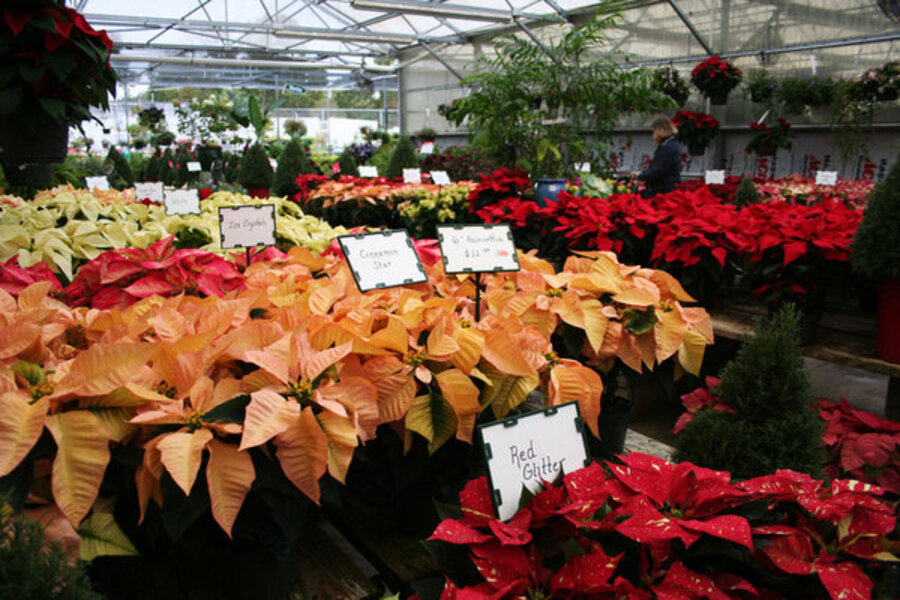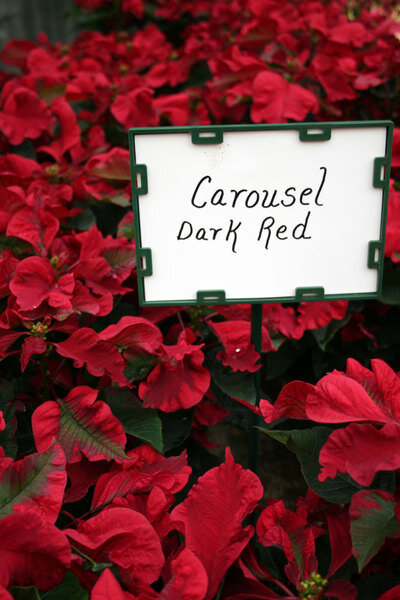How much do you know about poinsettias?
Loading...
The poinsettia certainly has its share of myths and misconceptions considering it’s the most popular houseplant of the holidays, so I think it’s time to clear the air. Here’s a little quiz that will test your knowledge and show you how to give your poinsettia the proper care.
Poinsettias are poisonous
False. Despite the similarities of the words "poisonous" and "poinsettias," poinsettias are not poisonous, scientific tests have shown. It is true that the milky latex sap can be irritating to some, particularly individuals with sensitive skin, but it's worth noting -- although you shouldn't try this at home -- that poinsettia sap was considered safe enough by early settlers to find use as a dye and medicine!
Poinsettia flowers are yellow
True. The poinsettia's colorful "blooms" of red, white, and pink are not flowers, but modified leaves called bracts. If you look in the center of the bracts, you'll see the real flowers, which are small, yellow, and rather unusual looking. The colorful red bracts develop in late fall to attract pollinators to the otherwise forgettable flowers.
Poinsettias are difficult to keep alive
False. Poinsettias are actually pretty easy to grow if you follow a few simple instructions. Choose a full and bushy plant with stems that are firmly rooted in the soil. Look for the small, unopened yellow flowers at the top of the plant, as they will bloom the longest. Be sure to keep the poinsettia protected from the cold on the way home. Place the poinsettia where it will get plenty of bright sunlight, and poke holes in the foil so that the roots don’t drown. Water thoroughly whenever the soil starts to feel dry. If desired, feed lightly every two weeks to keep the blooms at their brightest.
Poinsettias will bloom again next year
True, but it might not be worth the effort. If you're of the adventurous sort with a lot of time to spare, you can get a poinsettia to rebloom – but only if you give it 14 hours of complete darkness every night for 10 weeks in fall.After the holidays are past, keep providing regular water and sunlight until the leaves begin to fall off in spring. Then cut the plant back to the second set of leaves and move it outdoors to a partly sunny spot after all danger of frost has passed.
This is where things get tricky. Starting in October, place the poinsettia in a dark closet or a black trash bag from 5 p.m. to 8 a.m. every day until Thanksgiving. For more specific guidelines, check out this site.
Blue poinsettias are fake
True. While you can find poinsettias in colors ranging from deep crimson-red to pale green, pink and white, the color of the new "blue" poinsettias offered at garden centers is fake. Depending on the grower, the poinsettias are sprayed with a blue dye before getting covered with glitter and splashed with alcohol or glue for an effect that is interesting, to say the least. Whether you love the dyed poinsettias or hate them, the color will not last for long. A poinsettia that has been dyed blue or any other color will eventually start producing normal leaves and is best thrown out.
Still stumped?
If I’ve managed to leave your poinsettia (or other holiday houseplant) questions unanswered, please leave a comment and I’ll be happy to help!
-----
Steve Asbell, The Rainforest Gardener, is one of more than a dozen expert gardeners who blog regularly here at Diggin’ It. You can find his illustrations, photography, articles, and essays at his garden lifestyle blog. Steve is currently writing a book on houseplants that will feature 50 artistic indoor container garden combinations.






